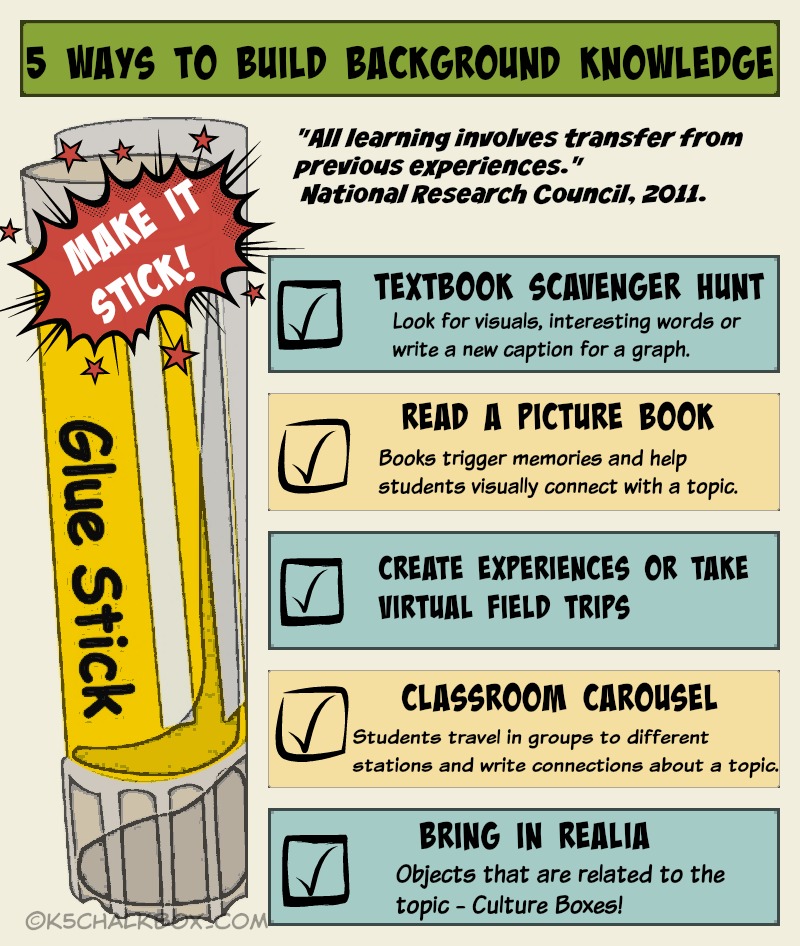How to build background knowledge and why it is critical to many students..
Students learn best when new content is linked with past learning and experiences. The differences we see in reading comprehension for our ESL students is partly due to their schema.
Schema is also culturally specific. That is really important, because when the meaning of the text is not part of a particular reader’s cultural background, the schema is skewed.
We must structure our lessons to fit our students existing schema.
But what happens if you, as the teacher, don’t know much about the backgrounds of the different students?
What if the family, cultural, and religious experiences of your students, including English language learners, are vastly different from your own? Where are the connections?
How can you connect ESL activities to something that might be completely foreign to you?
Ask and Listen for Background Knowledge
Ask and then listen to your ESOL students. The open-ended questions are simple enough:
- How many of you have ever…?
- When have you…?
- Tell about a time when you felt…?
These types of questions will provide you with ways for building background knowledge for students to be successful.
An experience shared in a five-minute quick-write can reveal connections to a scientific process, a historical situation, or a literary theme.
Give yourselves credit for your capacity to highlight, focus, compare and link student sharing with the ESL lesson plans; you already are building background knowledge all the time anyway.
Even beginning English language learners want to share their experiences.
Use activities to encourage them to use quick sketches, arrows, or simple pantomime to express ideas. If they get stuck:
- Suggest a word supported with a sketch or gesture of your own
- In a quick-write, concentrate on the ideas, not the spelling or grammar
- Help students share and connect.
Prior Learning
When you build a solid house, you start with a strong foundation. Students learn best when they can connect new information to previous concepts, vocabulary, strategies and activities from earlier learning experiences.
It’s possible that your students come from a number of feeder schools, not to mention different school districts, states and countries. If that is the case, it’s sometimes extremely difficult to know where to even begin a lesson!
Academic vocabulary and concepts learned in another language are just as valid as those learned in English, but school curriculum in other countries may have a different focus.
You can’t change what they have or haven’t been exposed to – you just have to work with what you have.
Refugee Students and Background Knowledge
Refugee students may significantly lack background knowledge and skills due to interrupted schooling.
Teachers have to determine what background information and learning strategies students already have, and then provide support to fill in any gaps.
- To assess previous learning, some teachers use short, formative written or oral pretests.
- Others utilize student-centered journaling or interactive class discussions as part of their TESL program.
As learning gaps are found, ESOL teachers should provide or display simplified materials from previous lessons.
These should be in the form of visuals, vocabulary graphic organizers, outlines, maps, essential word lists and time-lines.
Within the diversity of shared student stories is the common thread of living for all of us. By tapping into those past experiences, you stimulate clear connections between the lesson and the students themselves.
